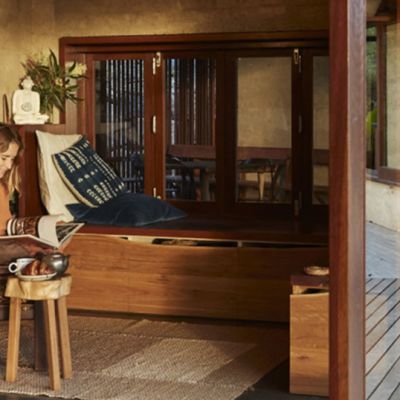On the water's edge: A look at Australia's iconic coastal homes
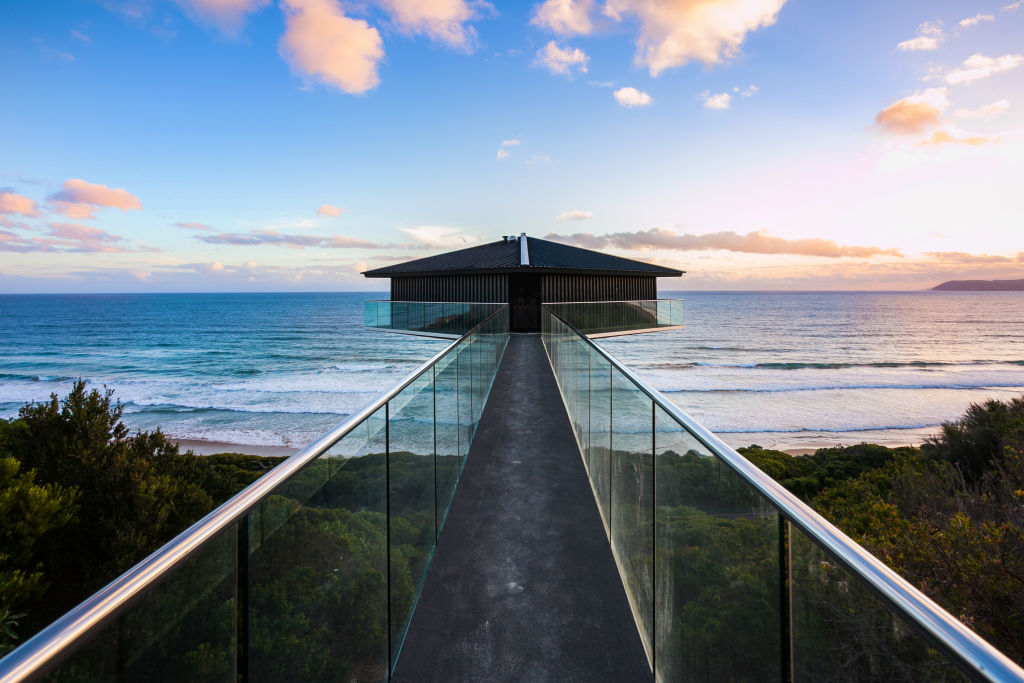
As an island continent that is quite literally defined by our vast coastline, it’s only natural that we would seek to spend more of our time by the water’s edge.
Many of us share a sense of nostalgia towards the quintessential Australian beach house having holidayed in them growing up, with sand between our toes and saltwater dripping from our hair.
Inspired by these fond recollections, there are some who have reimagined what a home by the sea means to them, resulting in some truly iconic designs – and in turn, spurring new blissful summer memories.
Hear about Australians living on the water on Somewhere Else:
The Pole House
Fairhaven, Victoria
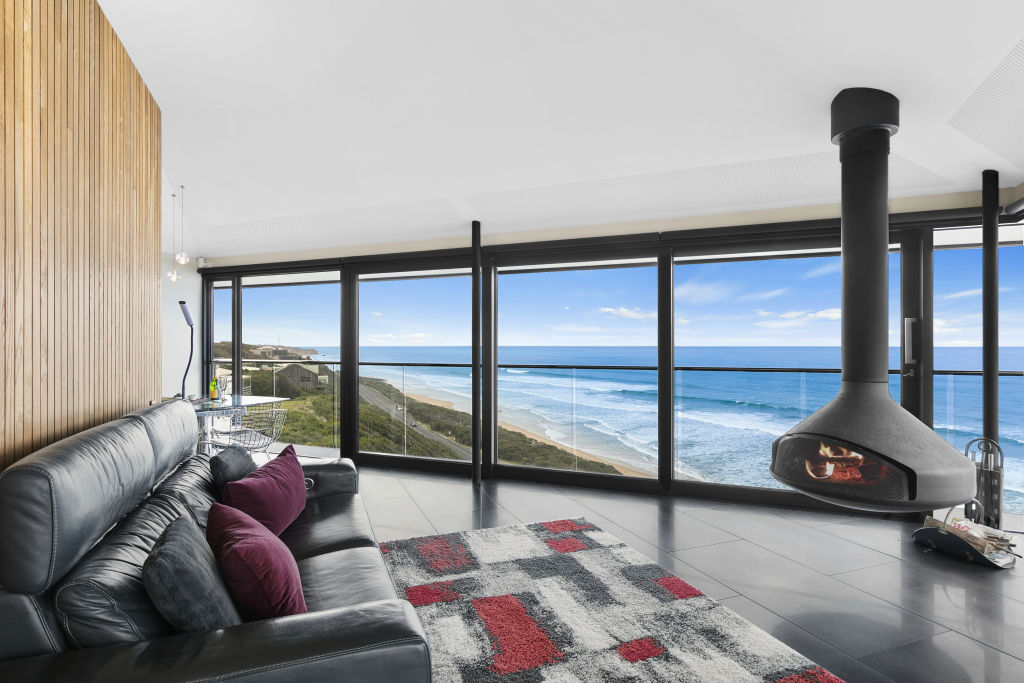
It’s only befitting that one of Australia’s most iconic roads, the Great Ocean Road, would be home to an equally iconic dwelling, The Pole House.
Supported by a single, hulking steel pole, this architectural gem is suspended 40 metres above Fairhaven Beach, complete with a glass balcony surrounding its perimeter, and appearing as though it is hovering over the nearby ocean.
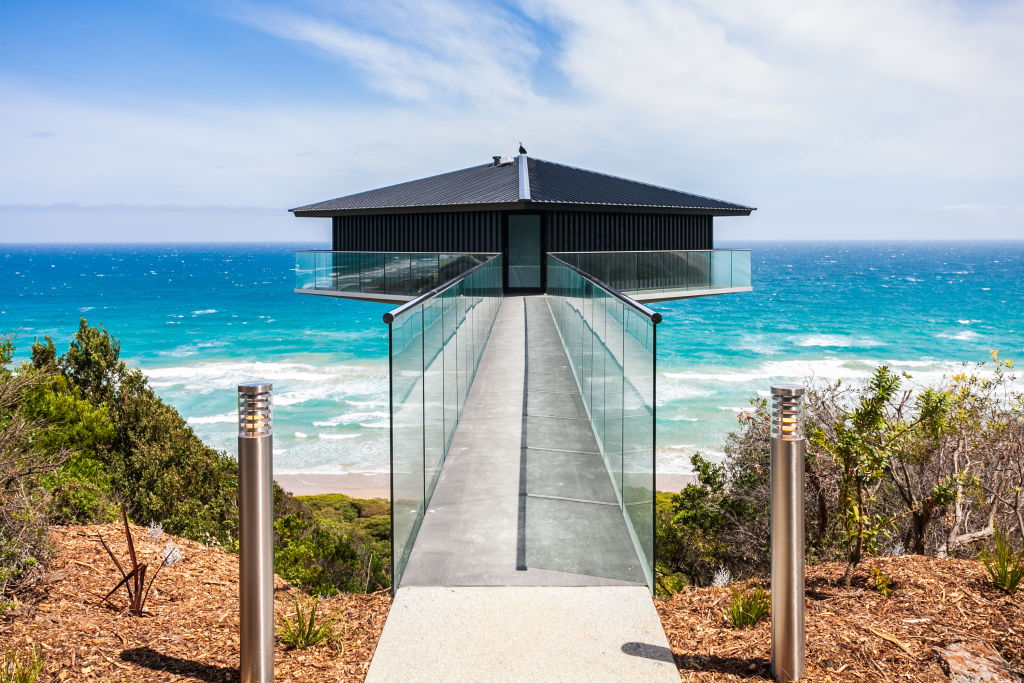
Built in 1978 by architect and engineer Frank Dixon, this Victorian landmark was originally constructed mostly from wood, sadly falling into disrepair over time due to the sea air. New owners decided to undertake a complete overhaul in 2013, appointing Franco Fiorentini, from F2 Architecture, to create a state-of-the-art construction that honours the original architect’s vision.
Earning its distinction as the most photographed house along the famous coastline, today The Pole House is a luxury holiday home, welcoming guests to enter via the floating walkway. Once inside, the open-plan interior encourages cosy moments by the hanging fireplace, along with sweeping sea vistas from Aireys Inlet to Lorne, afforded by the floor-to-ceiling retracting glass walls.
Solis
Hamilton Island, Queensland
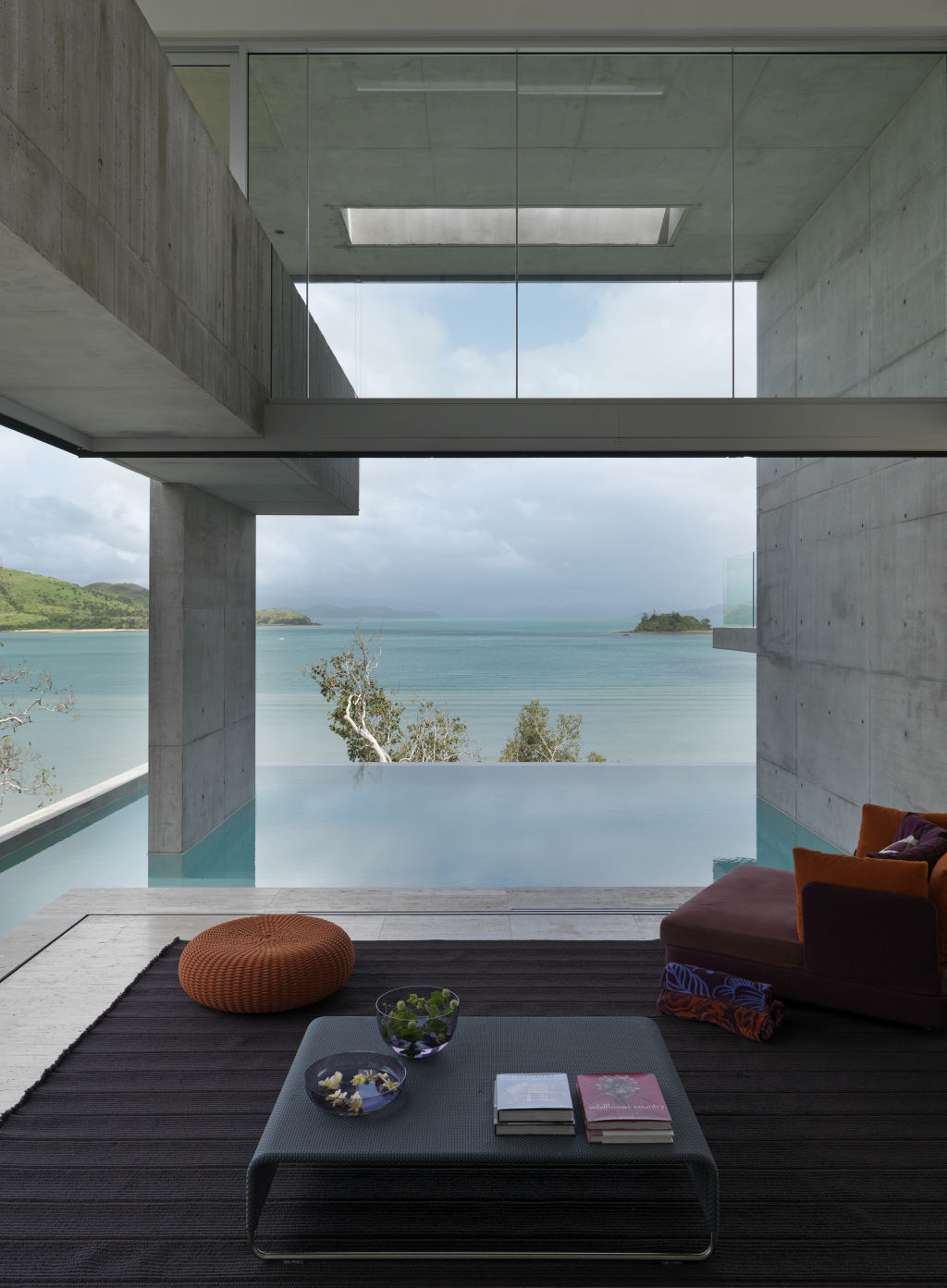
The epitome of Queensland’s tropical beauty, Solis is a stunning architectural response to one of the world’s most famous locations, Hamilton Island.
Designed by renowned architect, Renato D’Ettorre, the iconic residence has been amassing accolades since its completion in 2010, celebrated for its sense of connectivity to its magnificent natural surroundings.
Crafted from wonderfully uneven concrete, Solis sways away from a flat synthetic feel and, instead, showcases texture that creates a point of interest from every angle. And with the Coral Sea providing a breathtaking backdrop, the home acts as an organic extension of the ocean, achieved by a series of reflection ponds, shimmering pools, and idyllic terraces.
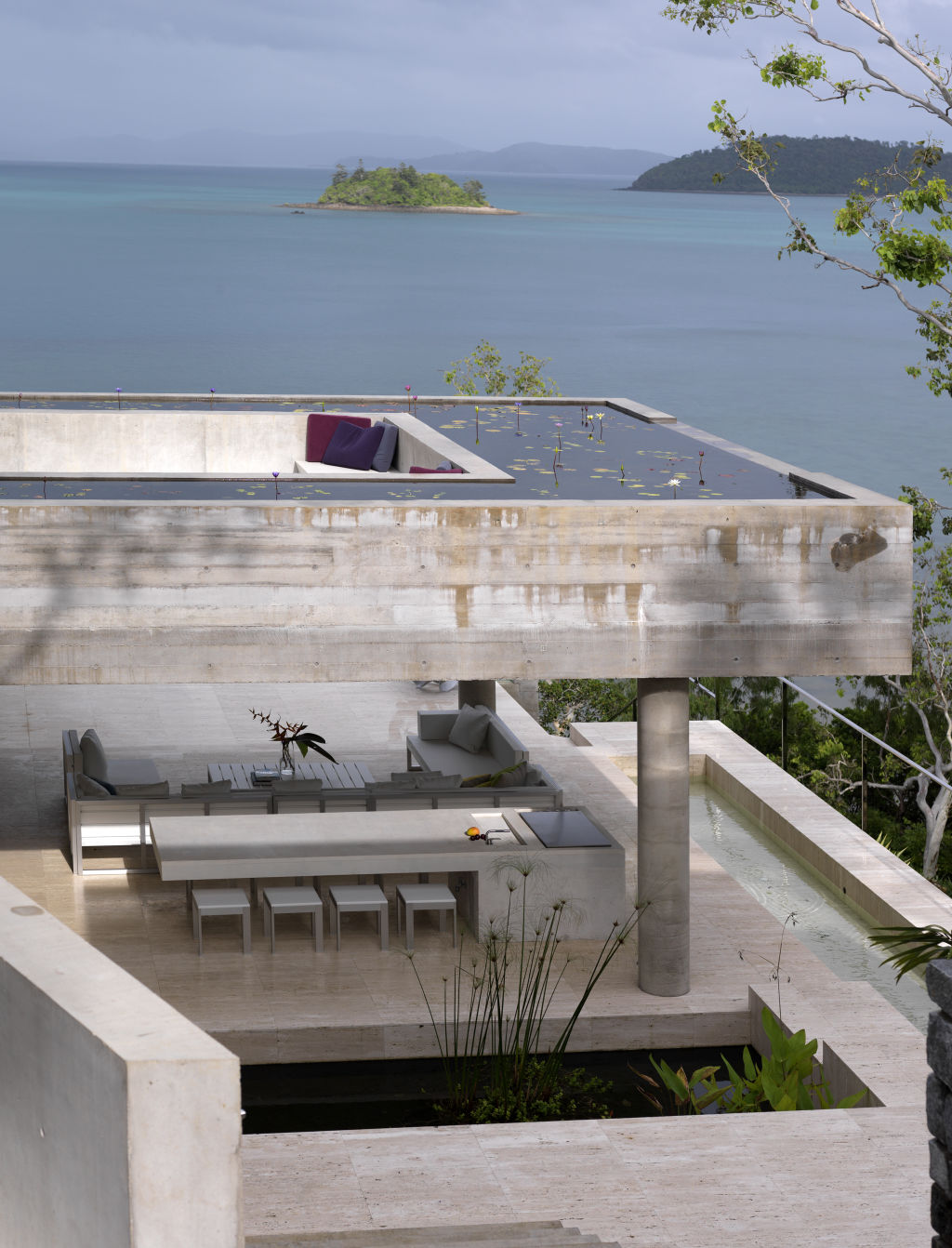
Further signs of a wished-for modern beach house include a connected series of living spaces, three bedroom suites each with their own dramatic views, and varying entertaining spaces.
Beyond this, the home’s free-flowing and functional design eliminates any superfluous detail, allowing the cool sea breezes, warm evenings, and spectacular sunsets to take centre stage.
Fender House
Mount Martha, Victoria
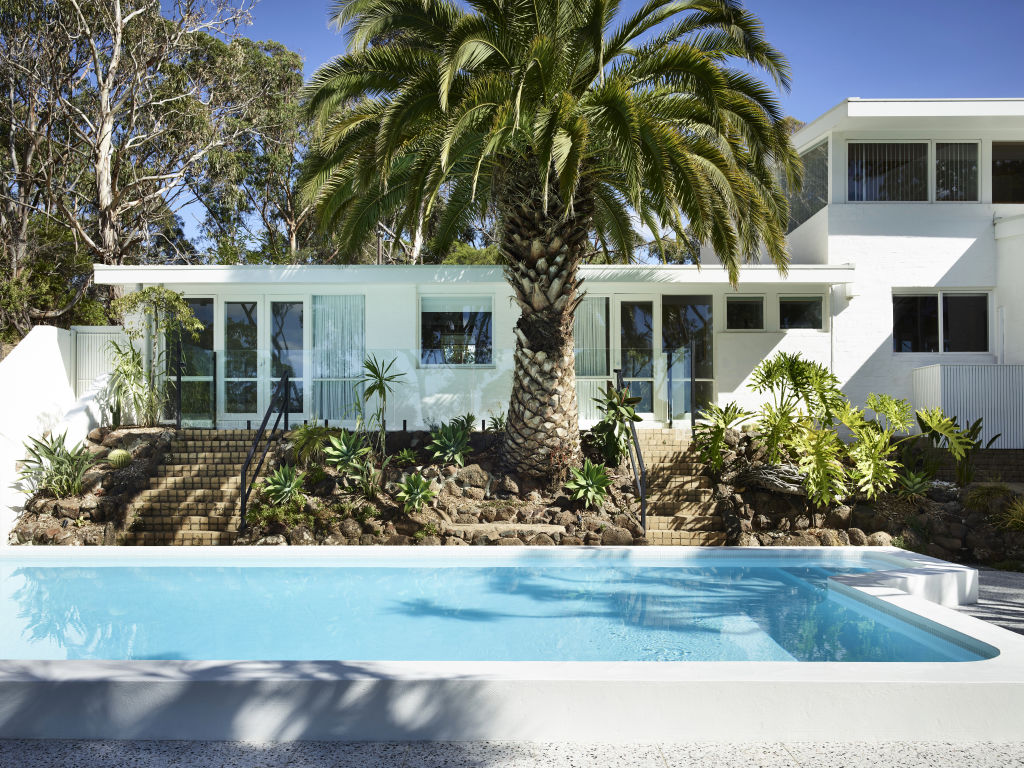
Sprawled across 1.4 hectares and nestled among the gum trees of Mount Martha, Fender House is a stunning example of mid-century living.
Built and designed in 1973 by Australian icon and renowned architect Karl Fender, Fender House, spreads out over varying levels, and has been lovingly restored to its former glory.
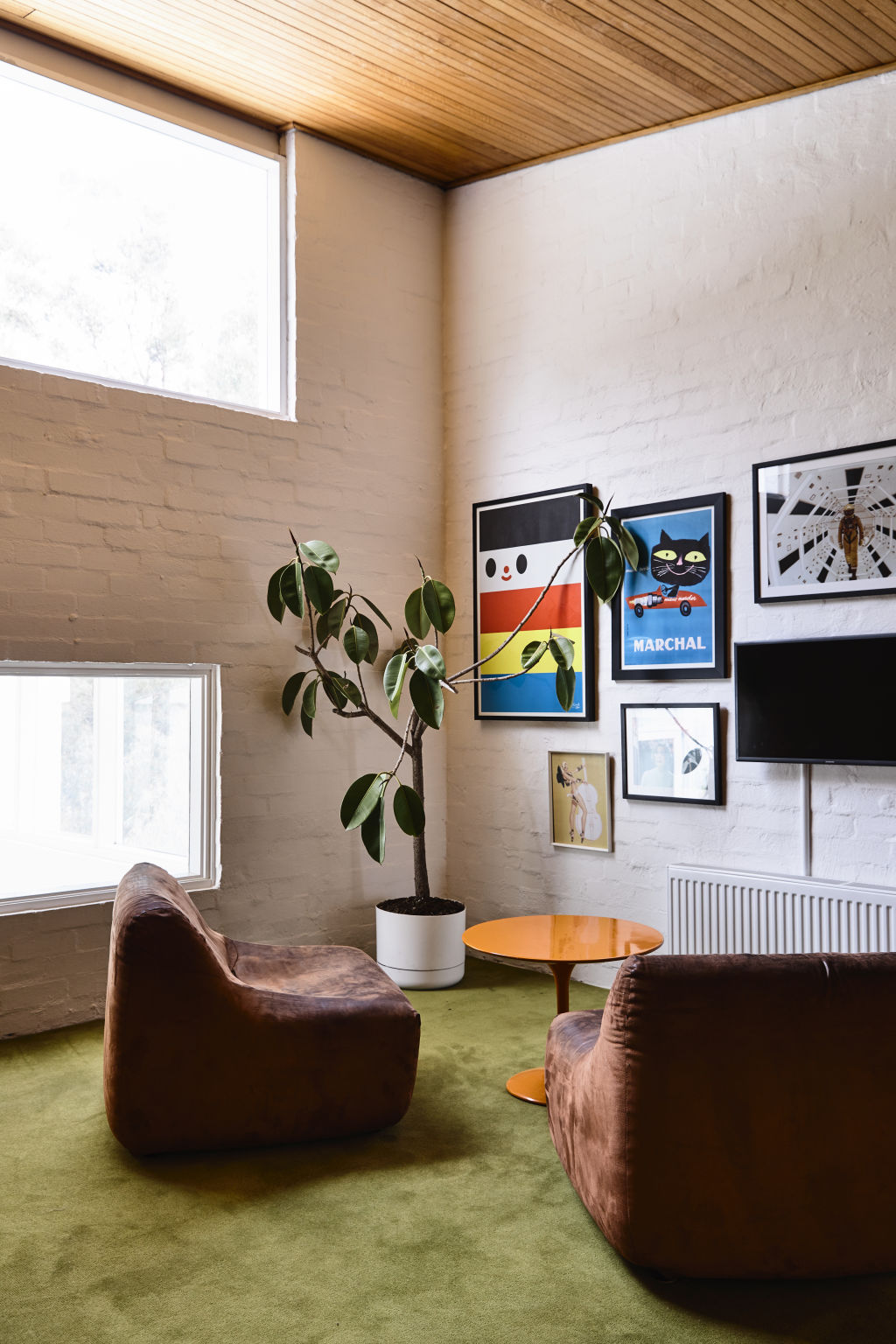
Clues of yesteryear present itself throughout this 1970s-style home, including split levels and wood panelling as well as original oversized windows and high ceilings. New additions such as terrazzo floors
and vibrant green carpet, topped with collectable furniture and decor set the scene of a bygone era.
As for outside, a Palm Springs-style pool acts as the main attraction, with its calming curves lending itself to mid-century style.
As the property is surrounded by giant gums, you would be forgiven for forgetting that this modernist marvel is located within a beachside suburb, home to the famous bathing boxes of Victoria’s Mount Martha – proving that an Australian beach house is not a one-design-fits-all.
Thalia Haven
Great Oyster Bay, Tasmania
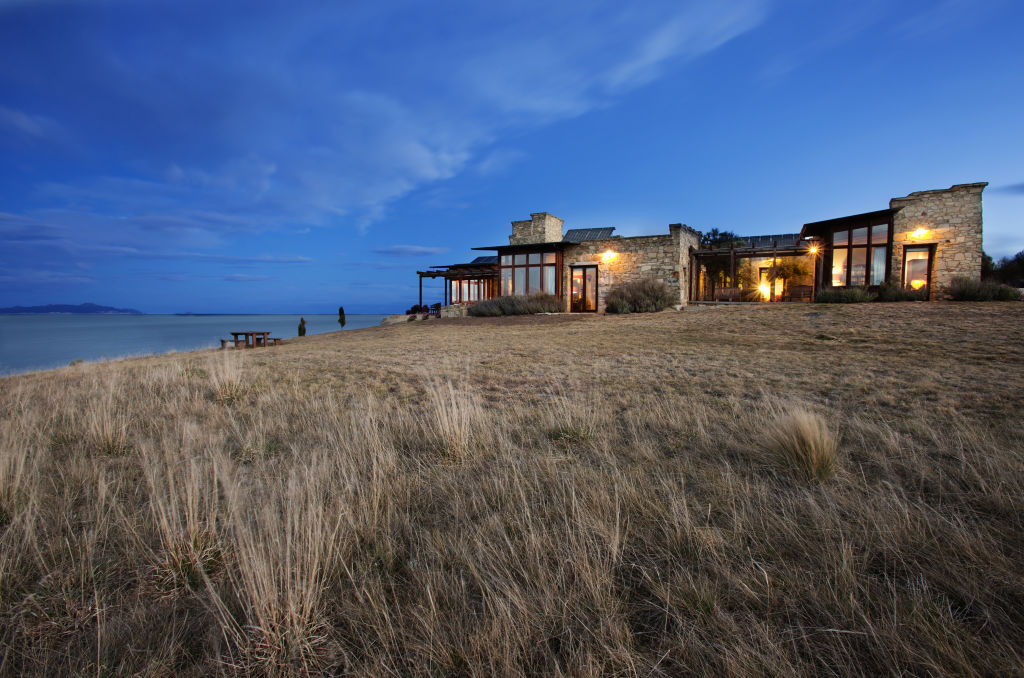
Secluded and by the sea, Thalia Haven is a breathtaking retreat, set on a private 52-hectare wooded peninsula, surrounded by the crystal clear waters of Tasmania’s Great Oyster Bay.
Designed by Morrison & Breytenbach Architects, sustainability and locally-sourced natural materials are the prime focus of this seaside structure. The building itself is made from local ancient stones, while other features include flagstone floors, recycled hardwood windows and doors, and roof beams of reclaimed timber.
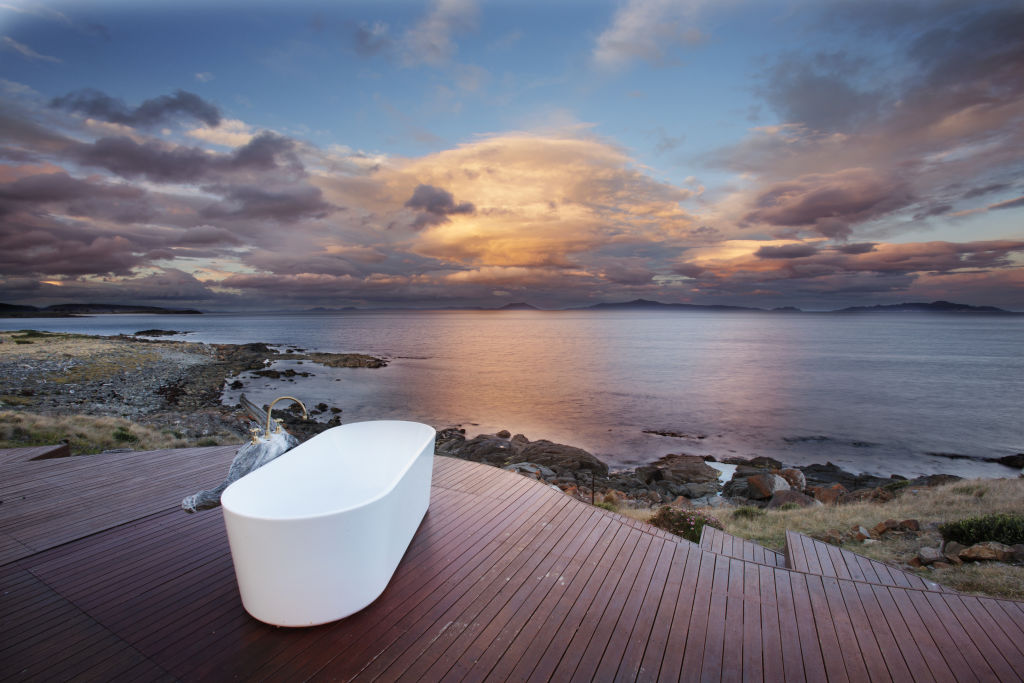
Those keen on exploring have exclusive access to a private beach and a 1000-tree olive grove, but for those who would prefer to stay put, there’s a large stone fireplace in the living room, and perhaps Australia’s most scenic and iconic outdoor bathtub, waiting on the deck outside.
Tasmania may not come to mind when thinking of the typical Australian beach house, but after having a soak, alone with the stars, the moon and the Milky Way, one is thankful to have ventured into the seemingly untouched terrain.
Fishcakes
Seal Rocks, New South Wales
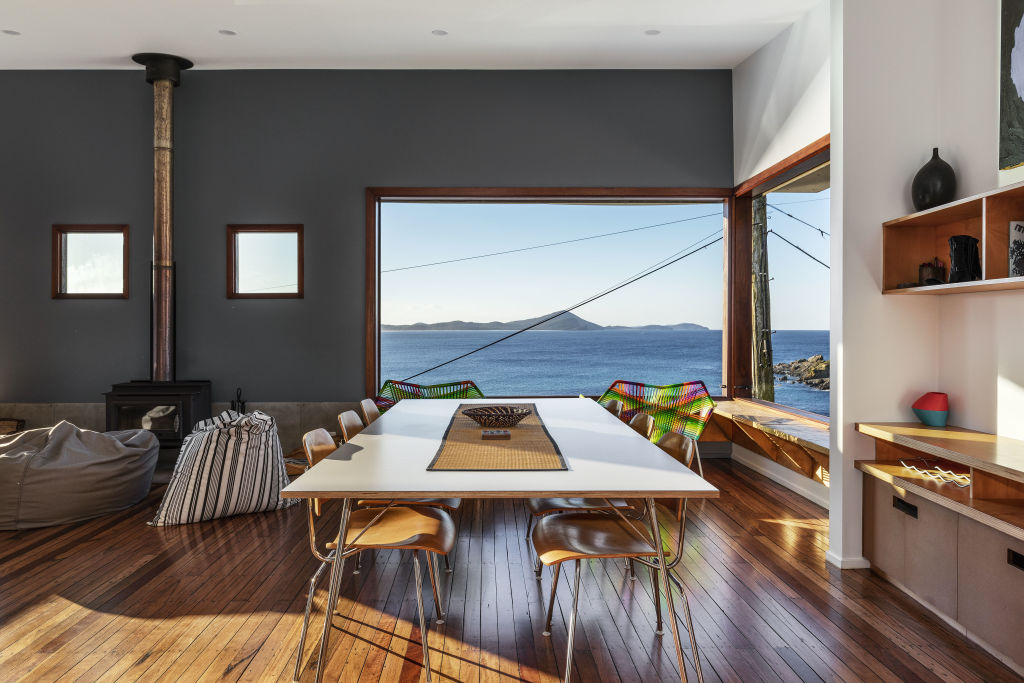
Set above the sand dunes of the small coastal enclave of Seal Rocks, Fishcakes honours the humble beginnings of the classic Australian beach house, stirring the nostalgic longing for a holiday home by the sea.
Originally built in 1997 as a humble two-bedroom fibro shack with one fish smoker and eight toilets, of which only one worked, Fishcakes has since been redesigned by award-winning architects Rachael Bourne and Shane Blue of Bourne Blue Architecture. They have given new life to the structure, while retaining much of its original charm.
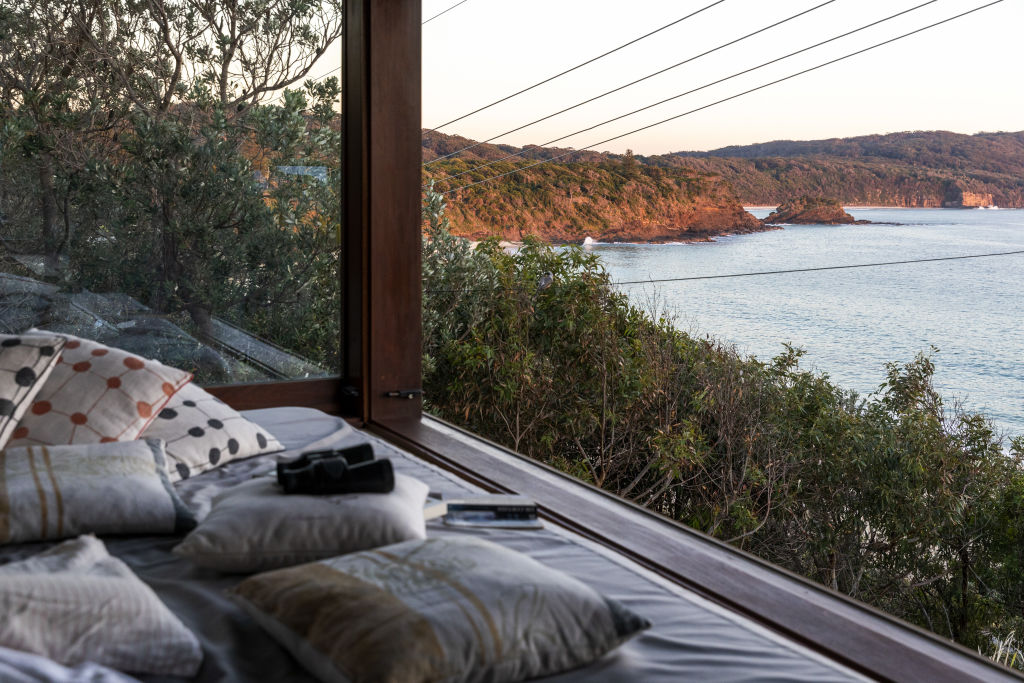
Being one of just a handful of homes overlooking the white sand cove of Seal Rocks, Fishcakes has been designed to take full advantage of its picturesque position, featuring seafront apex windows complete with a well-positioned daybed – a perfect spot for reading, watching sunsets, or taking an afternoon nap.
The property also features an open-plan living and kitchen area, an indoor-outdoor flow which is maintained via garage-style glass doors, and a wind-protected central courtyard that connects the original house with three pavilion bedrooms.
What’s more, Fishcakes’ unique elevated position means there are no signs of the main road, and no overlooking neighbours either.
We recommend
We thought you might like
States
Capital Cities
Capital Cities - Rentals
Popular Areas
Allhomes
More


